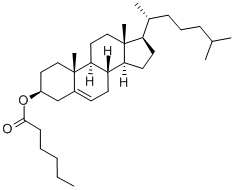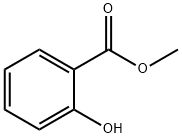A5431712
Methyl hexanoate , Analysis of standard products, ≥99.7%(GC) , 106-70-7
Synonym(s):
Caproic acid methyl ester;Hexanoic acid methyl ester;Methyl caproate;Methyl caproate, Caproic acid methyl ester, Hexanoic acid methyl ester;Methyl hexanoate
CAS NO.:106-70-7
Empirical Formula: C7H14O2
Molecular Weight: 130.18
MDL number: MFCD00009510
EINECS: 203-425-1
Update time: 2022-07-08
PRODUCT Properties
| Melting point: | -71 °C (lit.) |
| Boiling point: | 151 °C (lit.) |
| Density | 0.885 g/mL at 25 °C (lit.) |
| vapor pressure | 3.7 hPa (20 °C) |
| FEMA | 2708 | METHYL HEXANOATE |
| refractive index | n |
| Flash point: | 113 °F |
| storage temp. | Store below +30°C. |
| solubility | chloroform: soluble100mg/mL, clear |
| form | Liquid |
| color | Colorless |
| Odor | at 100.00 %. ethereal fruity pineapple apricot strawberry tropical fruit banana bacon |
| Odor Type | fruity |
| biological source | synthetic |
| Water Solubility | 1.325g/L(20 ºC) |
| JECFA Number | 1871 |
| BRN | 1744683 |
| Dielectric constant | 4.7000000000000002 |
| Stability: | Stable. Flammable. Incompatible with strong oxidizing agents, strong bases. |
| LogP | 2.34 |
| CAS DataBase Reference | 106-70-7(CAS DataBase Reference) |
| NIST Chemistry Reference | Hexanoic acid, methyl ester(106-70-7) |
| EPA Substance Registry System | Methyl hexanoate (106-70-7) |
Description and Uses
Methyl hexanoate has an ether-like odor reminiscent of pineapple. May be prepared by reacting methyl alcohol with hexanoic acid at 130 - 140°C in the presence of concentrated H2S04 and distilling the ester from the reaction mixture.
Intermediate for caproic acid detergents, emulsifiers, wetting agents, stabilizers, resins, lubricants, plasticizers, flavoring.
Safety
| Symbol(GHS) |  GHS02 |
| Signal word | Warning |
| Hazard statements | H226 |
| Precautionary statements | P210 |
| Risk Statements | 10 |
| Safety Statements | 43-16-36/37/39-7 |
| RIDADR | UN 3272 3/PG 3 |
| WGK Germany | 1 |
| RTECS | MO8401400 |
| TSCA | Yes |
| HazardClass | 3 |
| PackingGroup | III |
| HS Code | 29159080 |
| Toxicity | LD50 orally in Rabbit: > 5000 mg/kg |




